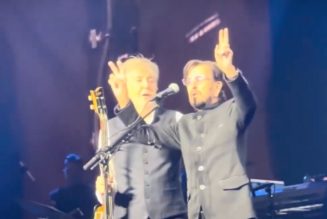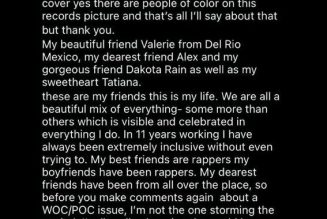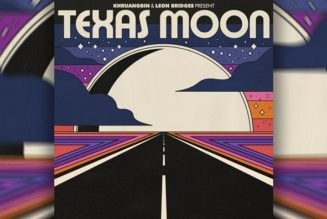
Music can be a soothing, beautiful sound or a call to justice and revolution. Music defines a culture and captures the essence of what makes it unique, enabling people to step into a different space and experience various emotions.
Certainly, the evolution of South African music is a complex and fascinating story that has been shaped over the centuries by a wide range of historical, social, and cultural factors.
South African music continues to evolve and inspire new generations of musicians and fans around the world, from its indigenous roots to the fusion of African, European, and American styles.
South Africa is home to a plethora of internationally renowned musicians from various genres, including jazz legend Hugh Masekela, singing diva Miriam Makeba, hip-hop icons Die Antwoord, and Afro-pop singer Brenda Fassie, to name a few.
The arrival of European colonists in the 17th century brought new musical traditions to South Africa, including European classical music, church hymns, and military band music. These styles were frequently adapted and blended with indigenous music, resulting in hybrid forms that reflected the cultural fusion of the time.
African jazz, jive, kwaito, marabi, mbube, and pennywhistle are just a few of the amazing musical genres that South Africa has contributed to the world over the years.
Political and racial oppression have both harmed and inspired South Africa’s music scene, but the country’s music scene is still expanding thanks to talented local artists, exciting new genres, and festivals. How did they arrive, then? A century of South African music is remembered.
Evolution of South African Music
The earliest music in South Africa was created by indigenous peoples, including the San, Khoikhoi, and Bantu-speaking peoples. South Africa’s indigenous music is varied and features a variety of genres and instruments, including the Kudu horn, the Uhadi (a bow instrument), and the Mbira (thumb piano).
Vocal chants, percussion instruments, and traditional dances characterized the music, which was used in spiritual and social contexts.
In the early 20th century, jazz and swing music began to gain popularity in South Africa, particularly in urban areas. This was influenced by the influx of African American musicians who visited the country, as well as the emergence of local jazz bands and big bands.
In the South African townships, a brand-new musical genre was birthed between the 1940s and 1950s. This style of music, dubbed “township music,” was a fusion of jazz, American swing, and African rhythms that gained enormous popularity among black South Africans. It frequently took place in dance halls and shebeens (unlicensed bars), and it gave voice to the social and political struggles of the era.
Mbaqanga music emerged as a new form of township music in the 1960s and 1970s, incorporating electric guitars, bass, and drums. This style spread throughout South Africa and was distinguished by its upbeat tempo and catchy melodies.
Bubblegum music emerged as a sub-genre of mbaqanga in the 1980s, featuring synthesizers and electronic drum machines. It was heavily influenced by Western pop music and became a popular anti-apartheid soundtrack.
Kwaito music emerged as a new genre in the 1990s and 2000s, fusing hip hop, house music, and traditional African rhythms. It grew in popularity among young South Africans and gave the post-apartheid generation a voice.House music is still a popular genre in South Africa today, with many local DJs and producers gaining international acclaim.
Resurgence Of Amapiano In South Africa
In recent years, amapiano has seen a significant resurgence in South Africa, where it now ranks among the most popular and significant musical subgenres there.
The resurgence of the Amapiano genre of music currently enjoying wider acceptance and making the world go around and helping people across the world to escape from their hustling bustling life to enjoy some of nature’s beauties.
Amapiano is a subgenre of house music with synths and expansive percussive bass lines that first appeared in South African music in the middle of the 2010s. It is a hybrid of deep house, jazz, and lounge music.
Amapiano is a house music style that emerged in South Africa in the early 2010s and has since grown to become one of the country’s most popular music genres. Amapiano is distinguished by its repetitive piano melodies, heavy basslines, and percussion, as well as elements of jazz and kwaito music.
Artists such as Kabza De Small and DJ Maphorisa have helped to popularize the genre both in South Africa and internationally.
Amapiano has recently become more well-known on the international stage thanks to collaborations with foreign musicians and performances at festivals all over the world by artists like Kabza De Small and DJ Maphorisa. This has contributed to the genre’s growing popularity both domestically and abroad.
In recent years, South African musicians have become more and more well-known on a global scale, with numerous artists going international. Examples include Nasty C, who has worked with musicians like T.I. and Ari Lennox, and Sho Madjozi, who received the Best New International Act honor at the 2019 BET Awards.
South African music is likely to continue to thrive and attract new audiences around the globe in the years to come thanks to a wide variety of styles and genres and an increasing number of talented artists and producers.
As it stands, the top exported Amapiano tracks & South African Album include Abo Mvelo (feat. Mellow & Sleazy & M.J); Love & Loyalty (Believe); Ameno Amapiano Remix (You Wanna Bamba); Big Flexa; Hamba Wena; WATAWI (feat. Davido, Focalistic & Abidoza); Abalele; Mina Nawe; Champion Sound and Tanzania, among others.









